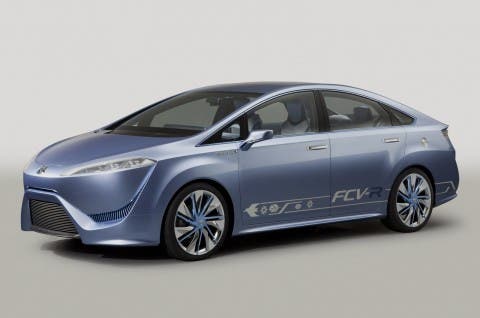Toyota has officially announced that it will launch a hydrogen fuel cell-powered car in 2015, but said sales volumes would be limited. The company announced they will use a high-density fuel stack which will have the potential to cover 500 miles on a single fuel tank.
The technology will take a while to be implemented and accepted by the public, says European president, Didier Leroy.
“To help that happen we will bring a reasonable number of cars to Europe. The volume will be limited, but they will be visible on the streets,” he said.
However, while this sounds like a really awesome idea, I have some doubts. Converting fuels to hydrogen for fuel cells often creates more pollution than just burning the fuels. Sure, you could obtain hydrogen for fuel cells using any type of energy, including renewable, which is of course a good thing – but if you do this, why do hydrogen in the first place, and not just use electric cars?
I haven’t found any information regarding the efficiency and carbon footprint of this new technology, so I won’t make any more assumptions, but the good thing is that hydrogen fuel is easy to store, better at capturing renewable energies than batteries and can be produced anywhere – it’s also faster to recharge your car with it than electricity.
“Taking these facts into account reinforces how Toyota is convinced fuel cell can deliver our ultimate goal of zero emissions and sustainable transport,” he said.
This sounds like a lofty goal, but again – just moving the emissions from individual cars to the hydrogen producing facilities doesn’t do much. I guess we’ll have to wait until 2015 to see just how efficient this really is.










